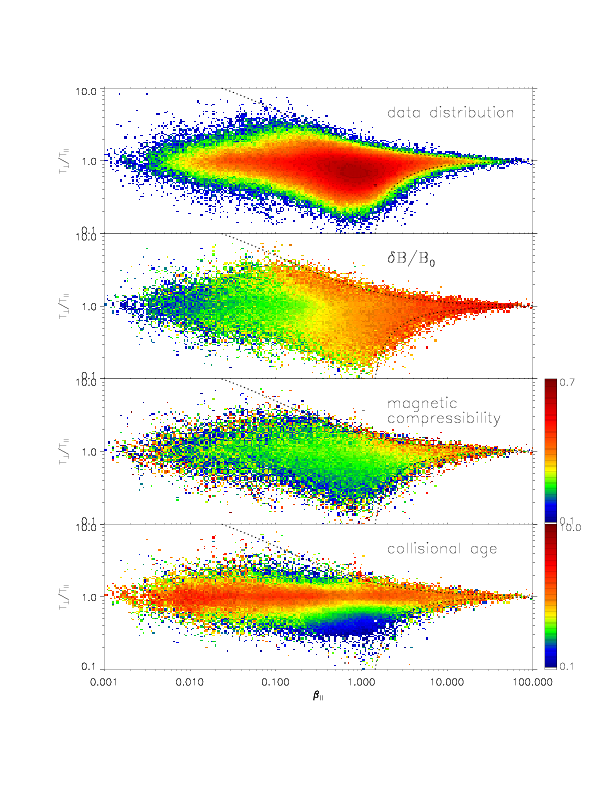Satellite Data Analysis
Satellite data from near-earth missions can provide a unique test of our understanding of kinetic plasma turbulence. Along with my collaborators at the Space Science Laboratory at the University of California, Berkeley, I am involved in the analysis and interpretation of satellite data from former and current missions. Although a number of these efforts are still in their formative stages, they contribute an important "reality check" for the other components of my research program at the University of Iowa. Below I detail one of these satellite data analysis projects.
Electron Temperature Anisotropies
The measured temperature anisotropies of the plasma species provides an important probe of the thermodynamics of the solar wind. Kinetic plasma turbulence in the solar wind is a manifestation of the nonlinear transfer of energy from the large scales at which the turbulence is driven down to the small kinetic scales at which the turbulent fluctuations are dissipated by collisionless mechanisms. This turbulent energy is ultimately deposited as plasma heat, so measures of the plasma heating provide constraints on the turbulent energy transfer.
In addition to the heating of the plasma by the dissipation of turbulence, temperature anisotropy instabilities can act on the collisionless solar wind plasma to redistribute particle energy. My collaboration with researchers at UC Berkeley, including the group of Stuart Bale at the Space Science Laboratory and Eliot Quataert of the Department of Astronomy, has been examining the electron temperature anisotropies in the undisturbed, near-earth solar wind. We have found clear evidence of the action of electron temperature anisotropy instabilities in the solar wind, as shown in the preliminary data below. We hope to submit this work-in-progress for publication before the end of the year.

|